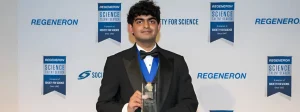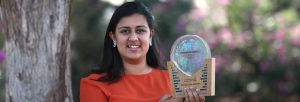(January 10, 2025) In the quiet suburbs of Beaverton, Oregon, a 13-year-old girl created a breakthrough invention — smart bandage that could monitor moisture levels to help wounds heal faster. This innovation earned Anushka Naiknaware the title of the youngest winner at the Google Science Fair in 2016, bringing her global recognition. But her journey started long before, inspired by a deep curiosity for how the world works and a love for science that began in her childhood.
How It Began
“I was always fascinated with how the world worked exactly how it did,” Anushka shared in her TED Talk. Inspired by Marie Curie and her local science museum, she started asking big questions and diving into science competitions. “I started reading journal papers, doing science fairs, and basically anything I could to get the knowledge I so desperately wanted,” she said.
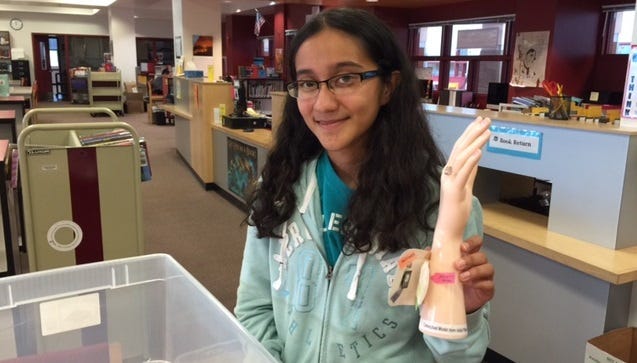
Anushka Naiknaware
While studying anatomy for a competition, she stumbled upon a shocking fact: the number of people in the US with chronic wounds is greater than the combined total of those with breast cancer, colon cancer, lung cancer, and leukemia. Chronic wounds, often caused by diabetes, fail to heal properly and can lead to serious complications. “Why haven’t I heard about 5K walks for chronic wounds?” she asked. That question sparked an idea that would change her life
The Birth of the Smart Bandage
Anushka Naiknaware discovered that moisture levels in a wound dressing play a key role in healing. Too much or too little moisture can slow the process and increase the risk of infection. With this in mind, she set out to create a “smart bandage” that could monitor moisture levels and alert doctors and patients when it was time to change the dressing.
Working in her garage with limited resources, Anushka faced many challenges. “Since this product would be interacting with the body, it had to be biocompatible, low-cost, and easy to manufacture,” she explained. She used nanoparticles of graphene, arranged in fractal patterns, to create sensors that could monitor moisture levels accurately. These sensors, connected via Bluetooth, transmitted real-time data to a smartphone app, allowing patients and doctors to monitor the healing process without removing the bandage.
Her design was a game-changer. It reduced the need for unnecessary dressing changes, minimized discomfort for patients, and provided critical information to speed up healing. “The final result is really impressive: doctors can see the exact time that the medication has to be changed and know everything about the wound immediately,” Anushka explained.
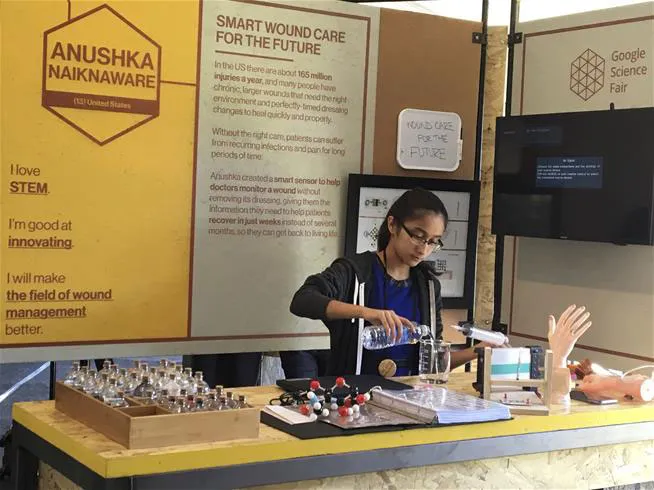

A Life-Changing Achievement
Anushka Naiknaware presented her invention at the 2016 Google Science Fair, where she earned the LEGO Education Builder Award. Along with global recognition, she received a $15,000 scholarship, a trip to LEGO’s headquarters in Denmark, and mentorship from a LEGO executive. “I want to use this mentorship to figure out how to get FDA approval for my bandages so they can be produced at scale and help patients,” she said.
Her smart bandage wasn’t the only thing that caught the world’s attention. Time magazine named her one of its “30 Most Influential Teens,” Teen Vogue named her one of its “21 Under 21” and MIT’s Lincoln Laboratory even named a minor planet after her—33118 Naiknaware.
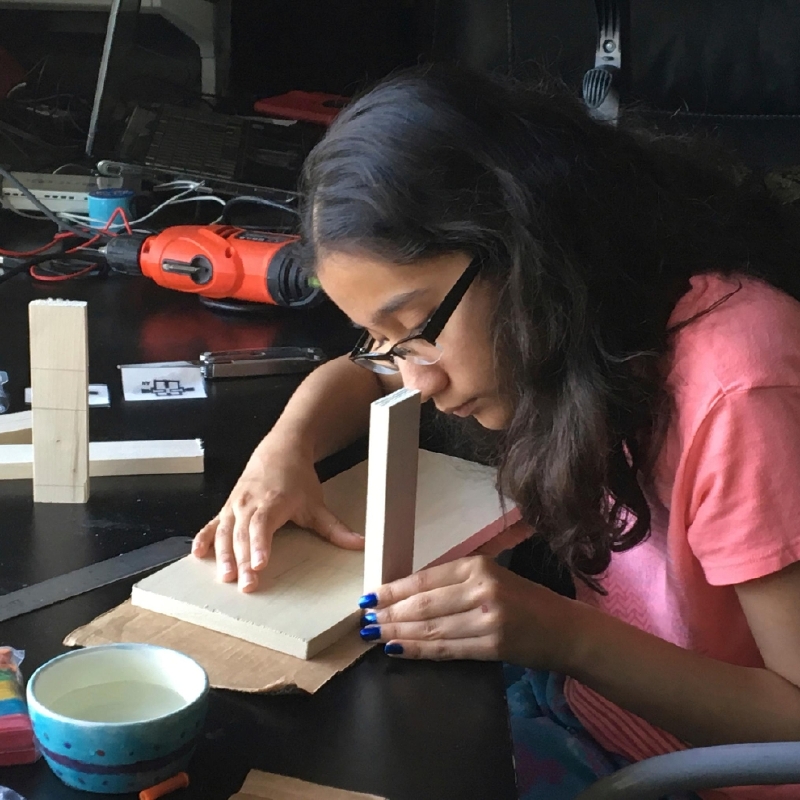

Challenges Along the Way
Despite her success, Anushka’s journey wasn’t without obstacles. “I couldn’t figure out how to get nanoparticle ink into a print check cartridge without spilling it all over my carpet,” she recalled with a laugh. She spent hours troubleshooting, writing computer programs, and testing her designs. “Even though I’m a 14-year-old working in her garage on something that she doesn’t completely understand, I could still make a difference,” she said.
Her work required precision. By using fractal patterns, she optimised the sensitivity of her sensors, ensuring they provided reliable data. “The most important lesson I learned is that failure isn’t the end. It’s an opportunity to learn and grow,” the Global Indian shared.
From Beaverton to MIT
Anushka’s groundbreaking invention was just the beginning. Today, she is pursuing a degree in Electrical Engineering and Computer Science at the Massachusetts Institute of Technology (MIT). At MIT, she continues to explore the intersections of technology and healthcare, focusing on how her skills can create real-world impact.
Her research has expanded beyond wound care, with a commitment to solving complex challenges in medicine and engineering. “I want my work to make a tangible impact on people’s lives,” she said.
Inspiring the Next Generation
Through her TED Talk and public appearances, Anushka has become a role model for young scientists everywhere. “What’s more important than the actual thing I designed is the attitude I had while doing this,” she said. “If you have the right mindset, you can make a difference at any age.”
Anushka Naiknaware’s journey is proof that age is no barrier to innovation. Her smart bandage has the potential to revolutionise wound care, and her continued work at MIT promises even greater breakthroughs.


